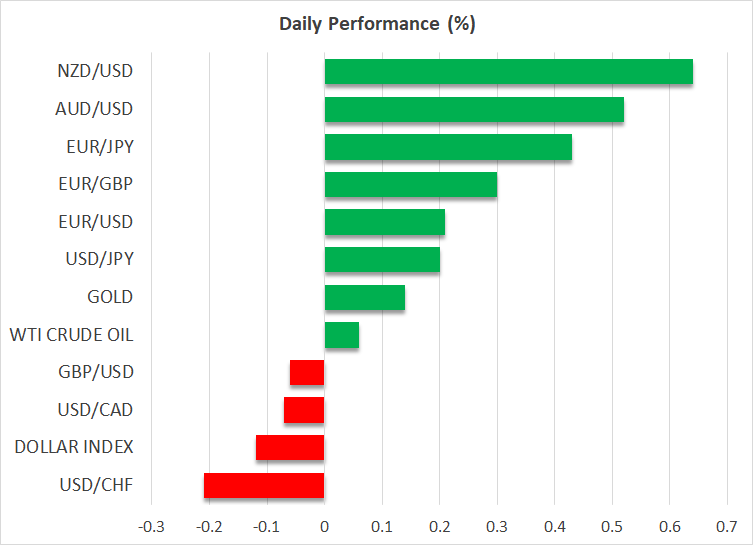Fed pushes back on rate cut talk but markets don’t listen

Fed begins damage control
Federal Reserve officials have hit the speaking circuit for the first time since Chair Powell’s dovish appearance in his post-FOMC meeting press briefing last week, in what looked to be an attempt to steer markets away from aggressive rate cut expectations. New York and Atlanta Fed presidents, John Williams and Raphael Bostic, were out in force on Friday, pushing back against bets of an early rate cut.
Williams told CNBC, “We aren’t really talking about rate cuts”, while speaking in a radio interview, Bostic ruled out a rate cut before the third quarter of 2024. Chicago Fed chief Austan Goolsbee who also spoke on Friday, was more open to the possibility of a cut as early as March. But Williams’ comments came across as more deliberate and were likely endorsed by Powell.
After sparking a market euphoria on Wednesday, sending out his top lieutenant could have been Powell’s way of conducting some damage control. The problem is, having already added fuel to the fire, it might require a lot more to contain this irrational exuberance by investors.
Markets listen but don’t take note
Treasury yields briefly jumped higher on Friday on the back of Williams’ remarks, boosting the US dollar, while shares on Wall Street dipped. But the moves were relatively modest, and it didn’t take long for them to be reversed. The two-year yield seems to have reacted much more than the 10-year yield, which is sliding again today.
This is likely an indication that investors are confident that inflation will soon reach 2% and stay there and therefore continue to price in almost 150 basis points of rate cuts in 2024. It’s possible that Powell’s dovish take on the policy outlook was aimed at bolstering optimism for a soft landing. But markets didn’t really need a helping hand in that regard so it will be interesting to see whether there will be more backtracking in the coming days.
For now, though, there’s little sign of an imminent market correction and US stock futures are marginally higher on Monday after modest gains for the Dow Jones and Nasdaq on Friday, and a flat close for the S&P 500.
In Europe, stocks have had a mixed start to the last full trading week of the year before Christmas as ECB policymakers have joined their Fed peers in pushing back against early rate cuts.
Euro boosted by hawkish ECB talk, yen edges lower ahead of BoJ
Hawkish remarks from the ECB’s Nagel and Muller earlier today have lifted the euro, which is recouping some of Friday’s steep losses. The Australian and New Zealand dollars are extending their bullish streak, climbing to near five-month highs versus their US counterpart amid renewed hopes that China will pump more stimulus into its flagging economy.
The yen bucked the trend, however, softening to around 142.40 to the dollar during European trading. After a lot of speculation about a surprise rate hike by the Bank of Japan in December, most bets now seem to be settling towards an April liftoff, putting some downside pressure on the yen.
Now that bond yields are no longer surging and the dollar’s rampage is over, the Bank of Japan can afford to wait. Governor Ueda has repeatedly hinted that the outcome of next year’s spring wage negotiations will be crucial to any decision on exiting negative rates so no change in policy is the likely outcome of the BoJ announcement early on Tuesday.
The other big risk for the markets this week is the core PCE price index out of the United States on Friday.






















